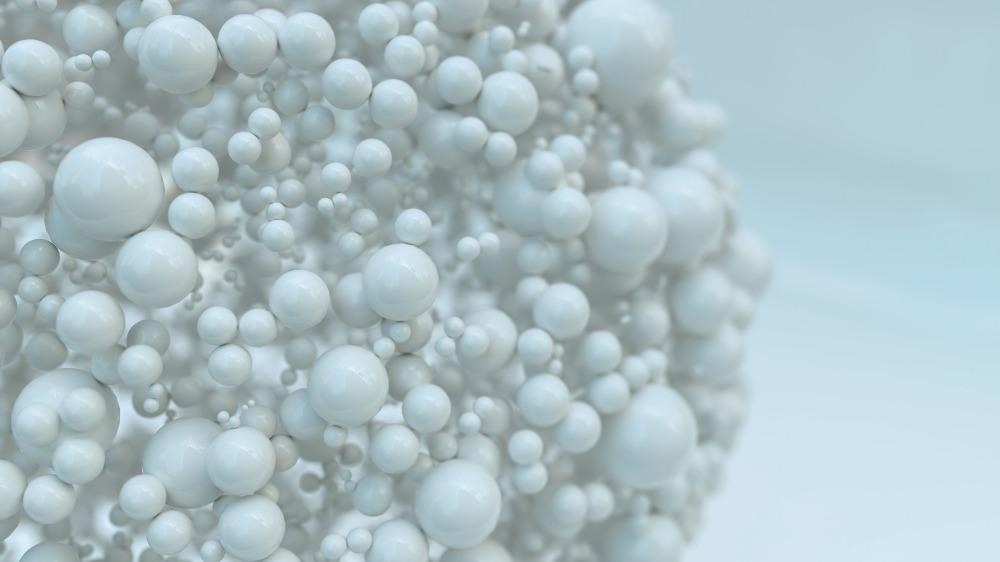
Image Credit: Crevis/Shutterstock.com
The usefulness of self-healing materials was discovered two years ago and this material still intrigues the scientific community, with researchers using nanotechnology to enhance the self-healing materials’ effectiveness.
Nanoparticles can disperse throughout a material (e.g., polymers), penetrate the cracks, and help initiate the self-healing process. This article discusses the widespread applications of self-healing nanoparticles.
General Properties and Mechanism of Self-Healing Nanoparticles
Incorporation of nanomaterials and nanostructures in polymers offer rich functional groups, large surface area, and unique properties (thermal or electrical conductivity and biological) that assist the healing process.
Nanotechnology also helps understand the underlying micro and nanoscale polymer chain interactions. This information helps researchers to design more advanced self-healing polymers with various applications. For example, scientists have developed a self-healing carbon nanotube nanocomposite utilizing epoxy, polyurethane, rubbers, and poly (methyl methacrylate).
The effectiveness of a self-healing process is dependent on the type, size, and shape of nanoparticles. Other factors on which the efficiency of the self-healed polymer/carbon nanotube depends are:
- Modification of the matrix
- Functions of nanotubes
- Processing schemes
- Matrix-nanofiller interaction or compatibility
In 2006, Dr. Thomas Russell of the Materials Research Science and Engineering Center at the University of Massachusetts Amherst, stated that these materials can repair any cracks formed with minimal or no external invasions.
Nanofillers can also promote self-healing properties. Some of the commonly used nanofillers are nano-silica, graphene, carbon nanotubes (CNTs), ceramic oxides, and nanocellulose.
Researchers have reported that the addition of cellulose nano-whiskers has increased the tensile strength of polyvinyl alcohol up to 60 times. Similarly, conducting nanofillers such as graphene and CNT, with high-thermal conductivity is used as nanoscale heaters. The nanoparticles are therefore used to enhance the self-healing mechanisms within the polymer matrix.
Application of Self-Healing Nanoparticles
Self-repair of electrical damage in polymers
Electrical grids require durable, stable, and strong dielectric polymers for the proper insulation of the wires.
The high local electric fields lead to electrical treeing, causing structural damage and degradation to the electrical conduction of dielectric materials, as well as massive device failure.
Scientists have demonstrated that the addition of superparamagnetic nanoparticles (less than 0.1 volume percent) to the thermoplastic polymer would help the healing of sections affected by electrical treeing. This measure would also ensure the restoration of the insulating properties.
Under the influence of an oscillating magnetic field, the nanoparticles travel to the electrical trees and produce higher local temperatures. This results in the repairing of the electrical tree channels in the polymer. This method also increases the durability of power cables for electronics and energy applications.
Prevention of post-operative reappearance of breast cancer
Hydrogel was first reported in 1960. A hydrogel is a three-dimensional network of crosslink hydrophilic polymers that swell in water. Due to the physical and chemical crosslinks of separate polymer chains, it can hold a large amount of water without disturbing the structure.
A hydrogel is an extremely important material, particularly for tumor therapy and regenerative medicine. This is because of its biomimetic ability to modulate tissue microenvironment.
Using Schiff-base linkage, scientists have developed a novel self-healing hydrogel based on graphene nanoparticles. The graphene-nanoparticle-based self-healing hydrogel is composed of chondroitin sulfate multialdehyde and branched polyethylenimine conjugated graphene.
The graphene-nanoparticle-based self-healing hydrogel showed 100% self-healing property and improved mechanical properties. An in-vitro study of postoperative recurrence of breast cancer in mice models showed the graphene-nanoparticle-based self-healing hydrogel’s potential.
Self-healing batteries
Lithium-ion rechargeable batteries often engage a carbon-based negative electrode. These batteries are prone to the formation of dendrites, which are small metallic structures developed on one electrode and grow toward the other. They may cause a short-circuit or even a fire.
Even though silicon electrodes provide a higher energy per unit of volume, it often falls apart owing to the expansion and contraction with recharge cycles.
Researchers at the University of Illinois developed a self-healing electrode, utilizing a conductive substance embedded into microcapsules. The expansion of the electrode causes a rupture in the microcapsules, dispersing the crack-filling material.
Self-healing DNA nanostructures
Scientists have recently designed DNA nanostructures that have self-healing properties. These nanostructures could be used for drug delivery and diagnostics. However, the first thing prior to the application of the DNA nanostructures is developing a strategy against nucleases attacks, i.e., finding a way to protect or repair the damaged DNA molecules.
Nanostructures are typically destroyed within 24 hours in serum at body temperature. Researchers have created various strategies such as DNA-nanotubes to stabilize the nanostructures in serum. The addition of these smaller DNA tiles to serum containing the nanotubes can heal the damaged structures.
Self-healing graphene-based composites biosensors
Wearable electronic sensors are powerful devices that help in the early diagnosis of diseases and aid in the constant monitoring of an individual’s health condition. However, these wearable sensing devices, when in contact with the human body, receive unavoidable scratches and mechanical cuts resulting in their malfunction.
In a proof-of-concept, researchers have revealed the development of a flexible, nanoparticle-based sensor with self-healing properties. They reported that the amendment of a self-repairing polymer with functionalized gold nanoparticle films increases the healing efficiency in the substrate and sensing films.
References and Future Readings
Yang, Y., et al. (2029). Self-healing of electrical damage in polymers using superparamagnetic nanoparticles. Nature Nanotech 14, 151–155. https://doi.org/10.1038/s41565-018-0327-4
Junfeng Su. (2020). Role of nanoparticles in self-healing of polymeric systems. Editor(s): Sabu Thomas, Anu Surendran. Self-Healing Polymer-Based Systems. Elsevier, 141-165. https://doi.org/10.1016/B978-0-12-818450-9.00006-4
Zhai, L., et al. (2020). Self-healing polymers with nanomaterials and nanostructures. Nano Today. 30,100826. https://doi.org/10.1016/j.nantod.2019.100826
Li, Qiwen., et al. (2019) Graphene-Nanoparticle-Based Self-Healing Hydrogel in Preventing Postoperative Recurrence of Breast Cancer. ACS Biomaterials Science & Engineering, 5 (2), 768-779 https://doi.org/10.1021/acsbiomaterials.8b01475
Kausar A. (2020). Self-healing polymer/carbon nanotube nanocomposite: A review. Journal of Plastic Film & Sheeting. https://doi.org/10.1177%2F8756087920960195
Disclaimer: The views expressed here are those of the author expressed in their private capacity and do not necessarily represent the views of AZoM.com Limited T/A AZoNetwork the owner and operator of this website. This disclaimer forms part of the Terms and conditions of use of this website.